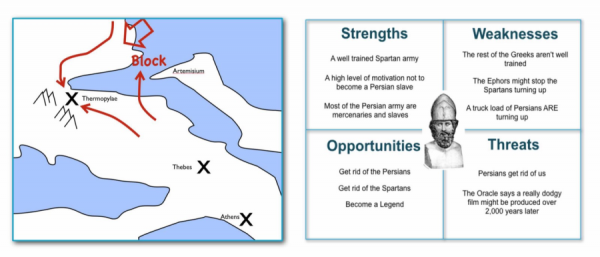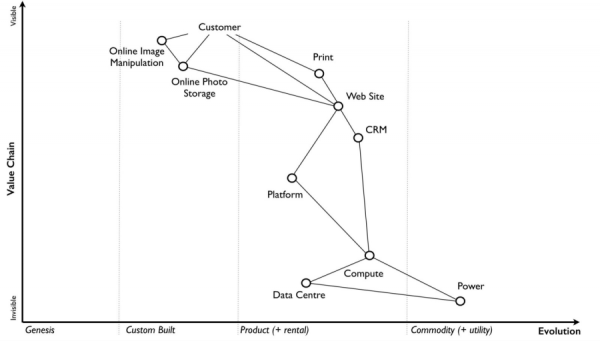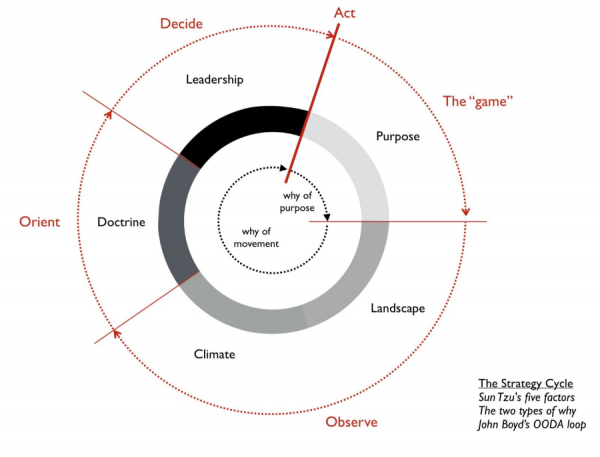In December I had a real stroke of luck: I went to a joint masterclass by Simon Wardley and Dave Snowden.
Dave Snowden has been known for some time about his contributions to complexity theory, his Cynefin framework.
Simon Wardley, on the other hand, didn’t show up on my radar until about six months ago. Some of his works are ten or more years old, just not as well known. However, Simon’s work is also a fundamentally new contribution.
The seminar – “master class” – was, in addition to a brief overview of the theories, a treasure trove of ideas on how to use the two concepts together.
The stroke of luck was approaching Simon about giving a keynote at Agile World. To my surprise, he has the time and the inclination.
To mark the occasion, I’m writing a series of blogs to share his key concepts.
At the core are maps, “maps”. Maps are a concept that, used correctly, can make visualization much more effective.
Simon’s first example: how to visualize the classic battle at Thermopylae – and shows, somewhat polemically, a SWOT graphic as a contrast.

His own maps, the Wardley maps, are constructed specifically for strategic analysis.

The X axis, is the direction of movement of products. They start as a genesis, i.e. new invention, next they are handcrafted as needed, then they become a product, and finally they become a commodity. The Y-axis shows the visibility from the customers’ point of view.
Above this is a strategic circle that begins with situation analysis, then explores options for action, and finally ends with decision and execution. Simon has also collected a large catalogue of patterns and heuristics for the various stages of the circle.

Each of these steps is worth exploring in more detail, and I will be doing so in the near future. Wardley Mapping is a great tool, it’s helped us improuvies figure out some tough situations and make better decisions. So: more later.





